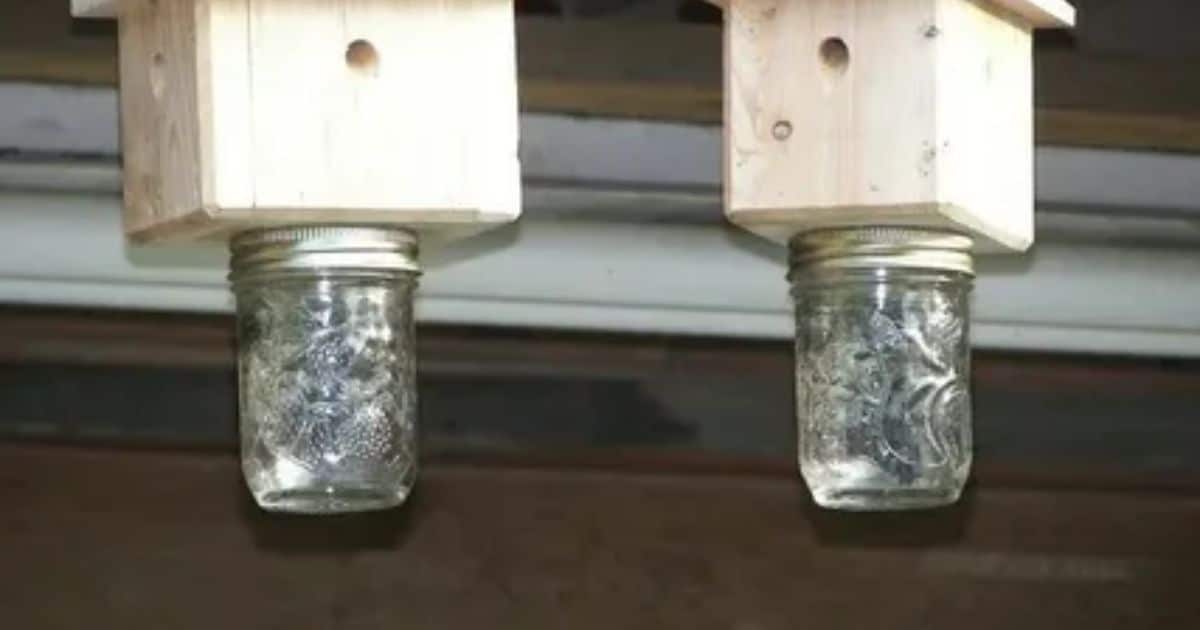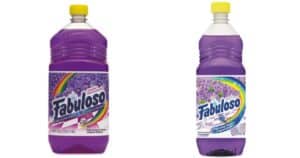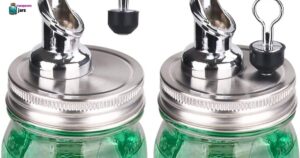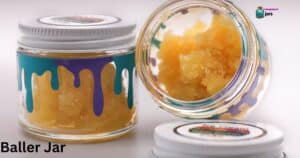To build a carpenter bee trap with a mason jar, get a wide-mouthed jar and drill holes in the lid. Use a wooden block to create a roof, like the shape on top of the lid. Hang the trap where bees gather. Fill the jar with sweet liquid like sugar water or syrup. Bees enter through the holes but can’t get out. Empty the jar regularly to keep catching more bees.
Make your own trap using a mason jar. Drill holes in the lid, add a wooden roof, and fill the jar with something sweet. Hang it where bees buzz most, and watch them get caught. Simple, effective, and it keeps those pesky bees away from your space. How to build a carpenter bee trap with a mason jar?
Creating a carpenter bee trap using Wash Mason Jars is a straightforward solution. Drill holes in the jar’s lid, fashion a roof with a wooden block, and pour in a sweet liquid. Hang it in areas frequented by bees. They’ll enter but can’t exit, giving you an effective way to manage these buzzing pests. Simple steps, a mason jar, and you’re on your way to a bee-free zone.
Materials Needed For Your Carpenter Bee Trap
For your carpenter bee trap, gather simple materials easily found at home or a hardware store. Grab a wide-mouthed mason jar, preferably quart-sized, with a metal lid. You’ll also need a drill with a small bit, a wooden block or thick piece of wood, and some twine or wire for hanging the trap.
Make sure to have a sweet liquid like sugar water, syrup, or even a mixture of water and honey. This bait will lure the carpenter bees into the trap. Gather these materials, and you’ll be all set to construct an effective bee trap to keep those buzzing insects at bay.
Making Holes In The Mason Jar Lid
Making holes in a mason jar lid is simple. You’ll need a drill and the lid. Decide where to place the holes. Then, slowly drill them into the lid. Make sure the holes aren’t too big for the bees to enter but large enough for them to fit through.
Start with a small drill bit and gradually increase the size if needed. Aim for around ¼ to ½ inch in diameter. Keep the holes evenly spaced and consider making 4-6 holes for good bee access. Once done, wipe off any metal shavings and your lid is ready for the next steps in building your carpenter bee trap.
Crafting A Wooden Roof For Your Bee Trap
Crafting a wooden roof for your bee trap is simple. Take a small block of wood, a bit wider than your jar lid. Use a saw to create a slanted roof shape. Make sure it’s big enough to cover the lid and protect it from rain. Sand the edges for a smooth finish. This roof will shield the jar and keep your trap effective.
A wooden roof adds protection to your bee trap. It prevents rainwater from diluting the bait inside. Plus, it gives bees a sheltered entryway. Crafting it is easy, and it ensures your trap works well in different weather conditions.
Choosing The Perfect Sweet Liquid Bait
Picking the right sweet liquid bait is key for your bee trap. Bees adore sweetness, so go for things like sugar water, syrup, or even a mix of soda and water. Mixtures with a strong aroma can attract them even more. Opt for a scent that carpenter bees find irresistible, like vanilla extract or citrus oils. These options make your trap a bee magnet.
Consistency matters when choosing your bait. Refresh it often to maintain its allure. Bees prefer fresh, enticing scents, so don’t let the bait go stale. Keep your trap effective by changing the liquid regularly, ensuring those carpenter bees keep coming in and getting caught.
Assembling Your Mason Jar Carpenter Bee Trap
Assembling your carpenter bee trap with a mason jar is a breeze. Take your lid and drill holes evenly across its surface. Make sure the holes are just the right size for bees to enter. Then, cut a wooden block to fit snugly on top of the lid, creating a roof-like structure. This will keep rain out and give bees a space to land.
Attach the wooden block securely to the lid using nails or screws. Once your lid is prepped, fill the mason jar with a sweet lure like sugar water or syrup. Screw the lid back onto the jar tightly. Hang your trap in an area where carpenter bees frequent, and watch as they enter through the holes but can’t find their way out. It’s a simple setup that effectively catches these buzzing visitors.
Ideal Locations To Hang Your Trap
For the best results, hang your bee trap where carpenter bees gather most. Look for spots near wooden structures or where you’ve seen them buzzing around. Aim for areas receiving plenty of sunlight and shelter from the wind. These places attract bees and make your trap more effective.
Positioning the trap about 6-7 feet above the ground is ideal. Carpenter bees typically fly at this height, so it increases the chances of them entering the trap. Porches, eaves, or wooden fences are great places to hang your mason jar trap.
Ensuring Maximum Effectiveness
For maximum effectiveness, place your carpenter bee trap in sunny spots near the areas where bees are active. Bees prefer warmth, so these locations make the trap more enticing. Ensure the bait remains fresh by changing it regularly. Sugar water or syrup can attract bees effectively. Additionally, check the trap often to remove caught bees, allowing space for new ones.
Keep the trap away from strong winds or rain to prevent dilution or spillage of the bait. Secure the jar firmly to prevent it from swinging too much. Periodically clean the jar to maintain its attractiveness. By following these simple steps, you’ll ensure your carpenter bee trap works at its best, giving you a bee-free environment.
Carpenter Bee Trap Variations
Carpenter bee trap variations offer diverse ways to catch these buzzing insects. You can explore different designs, like using plastic bottles or repurposed containers instead of a mason jar. Some traps come pre-made with unique shapes or colors that attract bees. Experimenting with various baits, like fruit juice or essential oils, can also tweak the traps’ effectiveness.
These variations cater to different preferences and needs. Some traps focus on aesthetics, blending into garden decor, while others prioritize easy assembly or larger capacities for catching more bees. With these diverse options, finding the right carpenter bee trap variation becomes a fun and adaptable way to manage these insects.
Benefits Of Using A Mason Jar For Bee Trapping

Using a mason jar for bee trapping has perks. They’re easy to find and cheap. Mason jars are sturdy and can handle the task for a long while. Plus, they’re transparent, so you see when it’s time to empty the trap. This simplicity makes them great for anyone wanting an uncomplicated solution.
The jars also keep the bait fresh. Their design keeps the sweet liquid from spilling. And because they’re common, it’s simple to find replacements if needed. Mason jars are a reliable choice, making trapping bees hassle-free.
Environmental Impact And Sustainable Bee Control
Sustainable bee control helps our environment stay healthy. Using natural methods to manage bees avoids harming other creatures. It’s vital for keeping the ecosystem balanced and protecting our plants. By using traps or natural deterrents, we avoid using harmful chemicals that can harm not only bees but also other insects and animals.
Preserving bees sustainably is crucial for our food supply too. Bees pollinate many fruits and vegetables we eat. Without them, crops struggle to grow, impacting what’s available to us. By finding eco-friendly ways to manage bee populations, we support their crucial role in our environment without causing harm.
Frequently Asked Questions
How do you make a simple carpenter bee trap?
Making a simple carpenter bee trap is easy. Get a mason jar and drill holes in the lid. Make a roof-like cover with wood and attach it to the lid.
Do mason jar carpenter bee traps work?
Mason jar carpenter bee traps can be really effective! These traps work by luring bees in with sweet liquid bait, like sugar water or syrup, placed inside the jar.
What liquid do you put in a carpenter bee trap?
To lure carpenter bees into your trap, use sweet liquids. Things like sugar water, syrup, or even fruit juice work great. The sweetness attracts the bees, making them fly into the trap.
Conclusion
Building a carpenter bee trap with a mason jar is simple and effective. Using basic materials like a jar, drill, and sweet liquid, you can create a trap that keeps these bees at bay. By following easy steps like drilling holes, adding a wooden roof, and placing the trap strategically, you’ll see results.
It’s crucial to use harmless, sweet baits for the trap. Avoid chemicals that could harm bees or the environment. With regular maintenance and proper placement, this DIY solution helps manage carpenter bee presence without causing harm. Crafting this trap offers a safe and eco-friendly way to handle these buzzing insects around your space.











